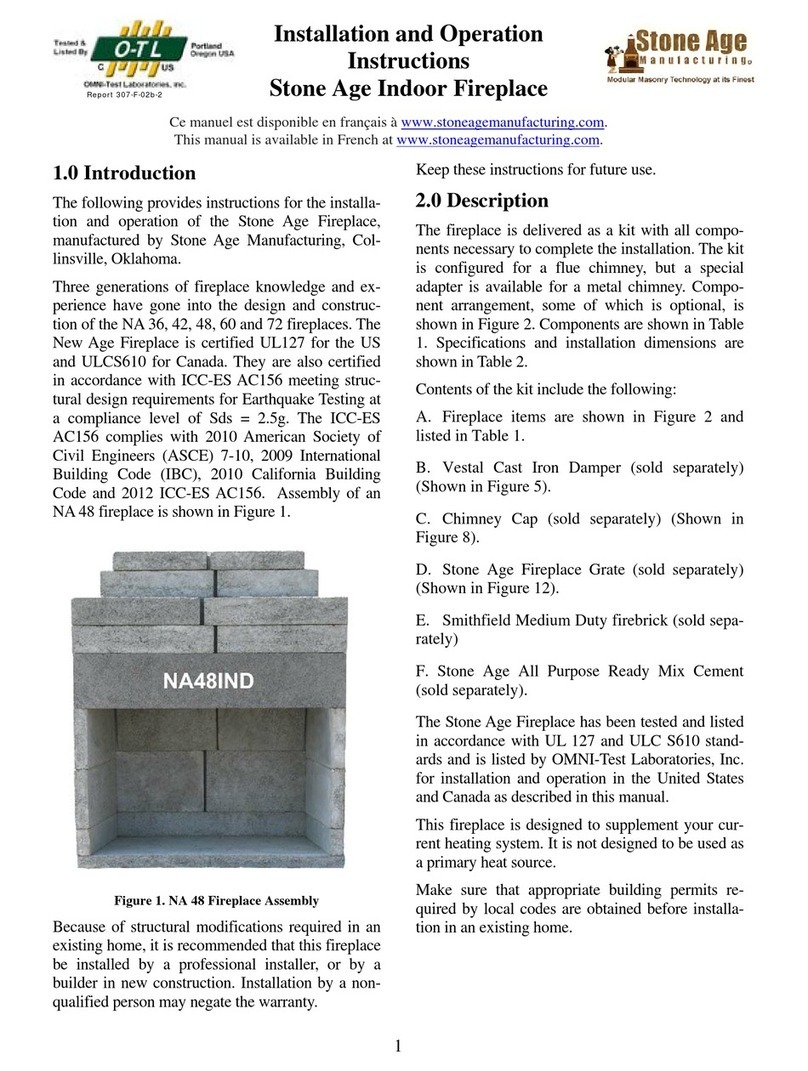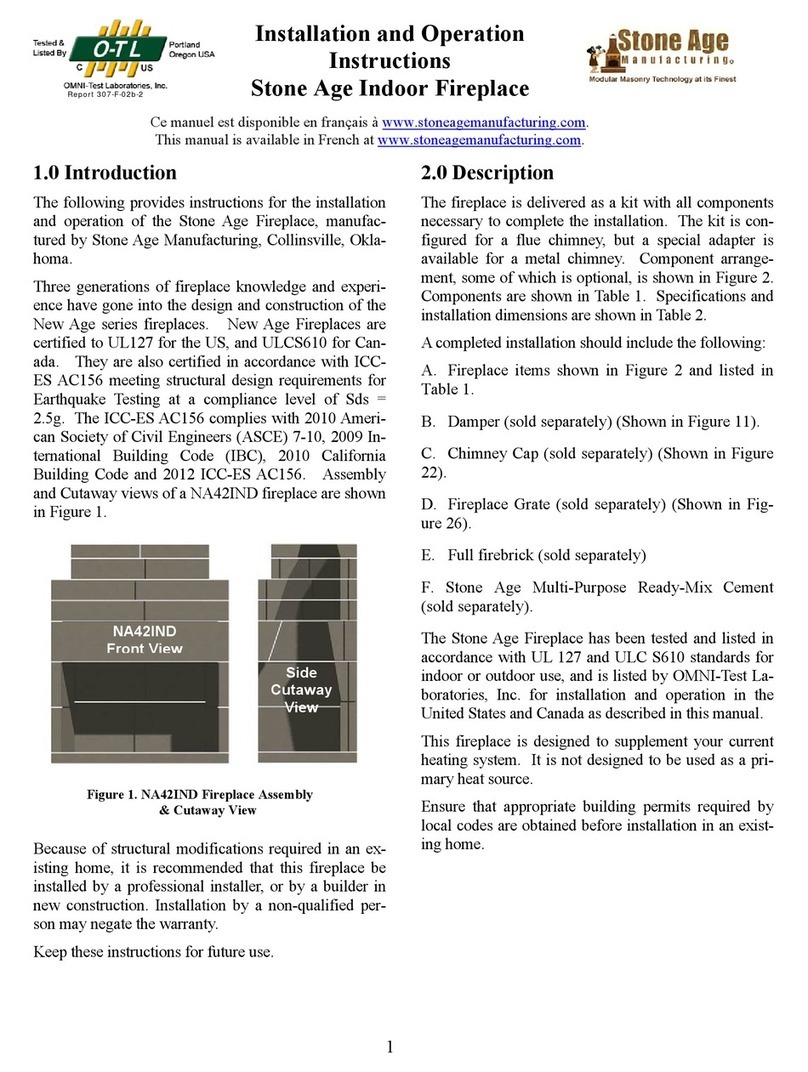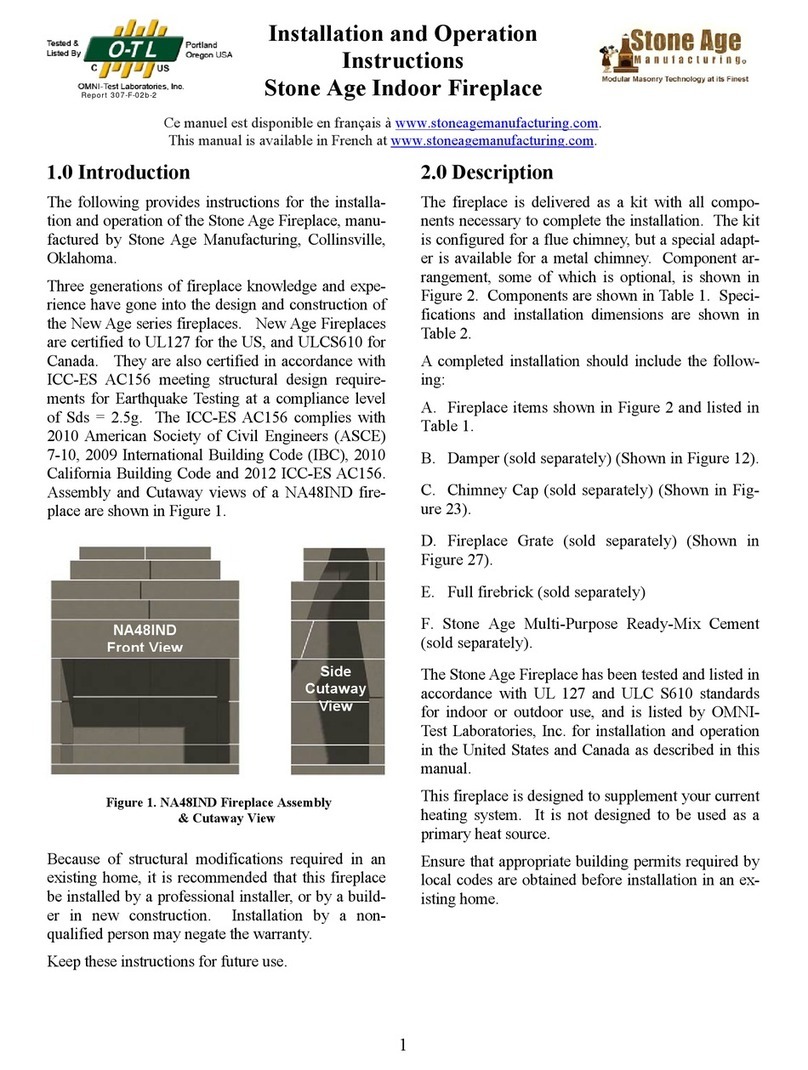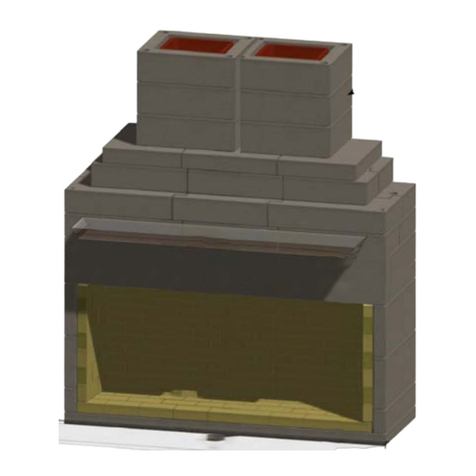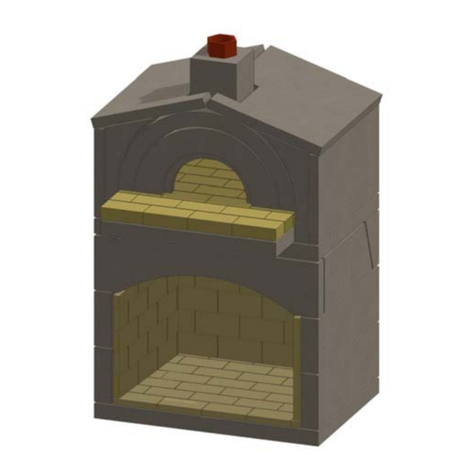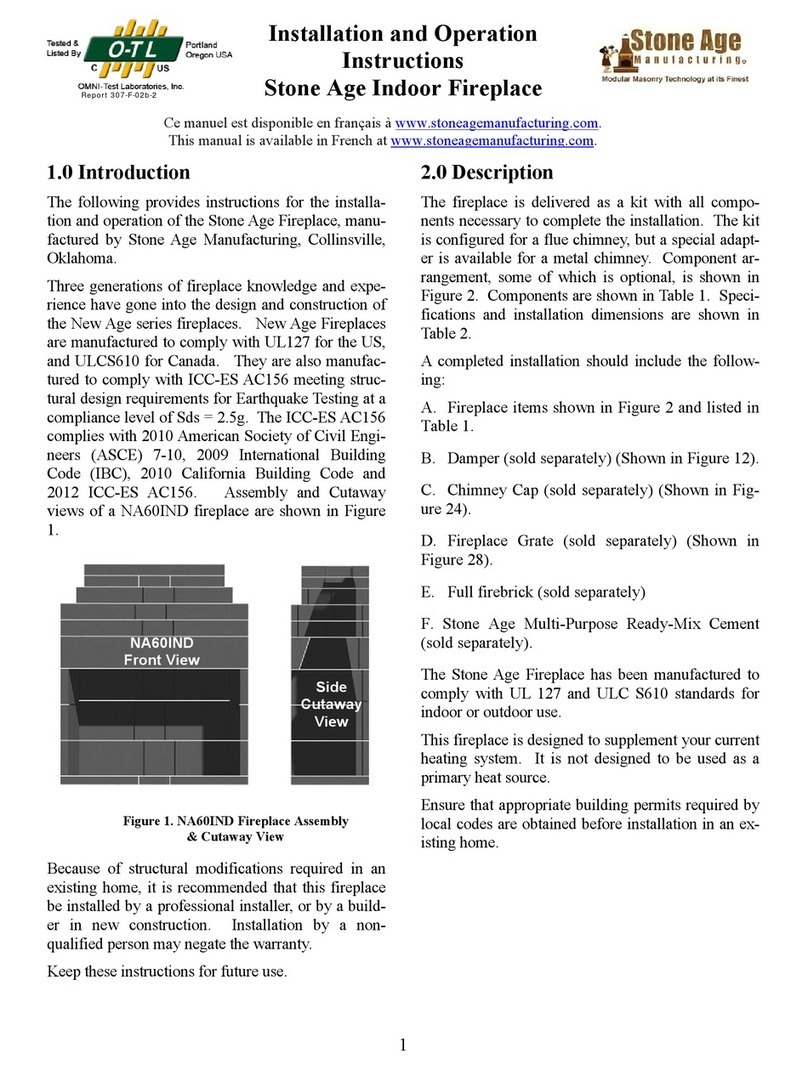
10
spillage. For a more thorough explanation of the fig-
ure 25 illustration, this is the traditional 2/10 rule. The
center of your chimney should be a minimum of two
feet higher than any roof or projection within ten feet
horizontally from the chimney center. This means the
chimney does not have to extend above the peak of the
roof. Once the chimney is ten feet away and extended
two feet above roof structure at that distance, the
height is sufficient, but it should never be less than
three feet taller than the point where it penetrates the
surface of the roof.
5.0 Operating Instructions
5.1 Safety Precautions
A fireplace can bring many hours of enjoyment, com-
fort and warmth if operated and maintained properly.
Certain safety precautions must be observed to elimi-
nate the dangers associated with fire and provide a
satisfactory, smoke free fire.
A. When burning wood use solid, seasoned wood
only. Do not use scrap wood or artificial wax based
logs, treated coal or woods dipped in pine tar or
pitch.
B. Never use gasoline or other combustible liquids
when starting a fire.
C. Keep the chimney damper open while burning a
fire. Do not interrupt air flow. Ensure sufficient air
is present to support combustion. The manufactur-
er of this fireplace is not responsible for interior
smoke resulting from lack of combustion air.
CAUTION: WHEN USING THE DECORATIVE GAS
APPLIANCE (VENTED GAS LOGS); THE
FIREPLACE DAMPER MUST BE SET IN
THE FULLY OPEN POSITION.
D. Keep a screen in front of the fireplace except
when tending the fire.
E. Keep combustible furniture/pillows at least four
feet from the opening.
F. Never leave the fire unattended.
G. Be extremely careful when adding wood and
handling fireplace tools. Never throw, kick or by
any other means force wood into the firebox as this
could damage the firebrick and fireplace walls that
could result in permanent damage and void the war-
ranty. Stress cracks from thermal cycling are nor-
mal.
H. Do not alter this fireplace to the extent that it
would jeopardize the structural integrity of the fire-
place. Drilling or cutting a hole for a gas line, fresh
air vent or ash dump is acceptable. Use only Stone
Age authorized equipment with this fireplace.
5.2 Selection of Wood
Use cured wood logs only. Scrap wood produces
sparks. Treated wood, coal, or woods dipped in pine
tar should not be used because they may leave a com-
bustible residue in the fireplace and chimney.
Use of seasoned wood is preferred.
The amount of heat available from logs will depend on
the type of wood, its dryness, quantity of wood and the
size of the logs. Ten pounds of twigs will produce as
much heat as a 10 pound log, but will produce it much
faster because the air supply is more available.
5.3 Softwood vs. Hardwood
Wood is divided into two classes, hard and soft woods.
Each has a use in a fireplace and each has advantages
and disadvantages.
The hardwood category includes such woods as oak,
walnut, birch, elm and maple. Softwoods include
pine, fir, cedar and spruce.
Selection of wood depends on the type of fire you
want. Softwoods are good to offset a morning chill
because the fire develops faster. Hardwoods are pref-
erable for a slower burning and uniform heat output.
Softwoods contain a highly flammable resin that will
leave creosote soot in the chimney flue. This often
results in sparking. Burning softwood exclusively will
require more frequent inspection and cleaning of the
chimney.
Experienced fire builders often use small amounts of
softwood kindling and newspaper when starting a split
hardwood log fire.
5.4 Seasoned Wood
Most freshly cut “green” wood will not burn well and
will smoke. The pressure of moisture and resin inside
green wood will build under heat and explode as
sparks. Therefore, it is recommended that only sea-
soned wood be used in your fireplace.
Most wood requires 9 to 12 months of seasoning and
drying to reduce the moisture content enough to pro-
duce good steady fires. Ensure that you buy only sea-
soned wood, or if you buy green wood (usually
cheaper), store it properly to aid in the seasoning pro-
































